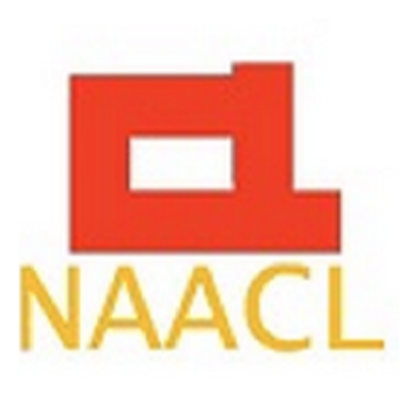naacl 1994 论文列表
Human Language Technology, Proceedings of a Workshop held at Plainsboro, New Jerey, USA, March 8-11, 1994.
|
PANGLOSS: Knowledge-Based Machine Translation.
Natural Language Planning Dialogue for Interactive.
Research in Natural Language Processing.
Data Access for Situation Handling (DASH).
CSR Data Collection.
Consistency Modeling.
Combining Linguistic and Statistical Technology for Improved Spoken Language Understanding.
Annotation of ATIS Data.
A Neural Network System for Large-Vocabulary Continuous Speech Recognition in Variable Acoustic Environments.
PIRCS: a Network-Based Document Routing and Retrieval System.
WORDNET: A Lexical Database for English.
Robust Text Processing and Information Retrieval.
Research in Natural Language Processing.
Pangloss: A Knowledge-based Machine Assisted Translation Research Project - Site 2.
Diderot: TIPSTER Program, Automatic Data Extraction from Text Utilizing Semantic Analysis.
The Consortium for Lexical Research.
Written Language System Evaluation.
NIST-ARPA Interagency Agreement: Human Language Technology Program.
Spoken Language Recognition and Understanding.
Robust Continuous Speech Recognition Technology Program Summary.
A Knowledge-Based Approach to Indexing Scientific Text.
Candide: A Statistical Machine Translation System.
Automatic Extraction of Grammars From Annotated Text.
The TIPSTER/SHOGUN Project.
Research in Large Vocabulary Continuous Speech Recognition.
The Automatic Component of the LINGSTAT Machine-Aided Translation System.
Extracting Constraints on Word Usage from Large Text Corpora.
Spoken-Language Research at Carnegie Mellon.
Pangloss: A Machine Translation Project.
Segment-Based Acoustic Models for Continuous Speech Recognition.
Evaluating the Use of Prosodic Information in Speech Recognition and Understanding.
Usable, Real-Time, Interactive Spoken Language Systems.
Robustness, Portability and Scalability Language Systems.
Robust Continuous Speech Recognition.
Language Identification via Large Vocabulary Speaker Independent Continuous Speech Recognition.
On-Line Cursive Handwriting Recognition Using Hidden Markov Models and Statistical Grammars.
Use of Lexical and Syntactic Techniques in Recognizing Handwritten Text.
Integrated Text and Image Understanding for Document Understanding.
Advanced Human-Computer Interface and Voice Processing Applications in Space.
Session 14: New Directions/Applications.
Is N-Best Dead?
A One Pass Decoder Design For Large Vocabulary Recognition.
The Lincoln Large-Vocabulary Stack-Decoder Based HMM CSR.
Techniques to Achieve an Accurate Real-Time Large-Vocabulary Speech Recognition System.
A Large-Vocabulary Continuous Speech Recognition Algorithm and its Application to a Multi-Modal Telephone Directory Assistance System.
Session 13: CSR Search.
(Almost) Automatic Semantic Feature Extraction from Technical Text.
Speech-Based Retrieval Using Semantic Co-Occurrence Filtering.
Assessing the Retrieval Effectiveness of a Speech : Retrieval System by Simulating Recognition Errors.
Document Representation in Natural Language Text Retrieval.
Learning from Relevant Documents in Large Scale Routing Retrieval.
Overview of the Second Text Retrieval Conference (TREC-2).
Session 12: Information Retrieval.
Microphone Arrays and Neural Networks for Robust Speech Recognition.
Microphone-Independent Robust Signal Processing Using Probabilistic Optimum Filtering.
Signal Processing for Robust Speech Recognition.
Adaptation to New Microphones Using Tied-Mixture Normalization.
The LIMSI Continuous Speech Dictation Systemt.
High-Accuracy Large-Vocabulary Speech Recognition Using Mixture Tying and Consistency Modeling.
Tree-Based State Tying for High Accuracy Modelling.
Session 11: Acoustic Modeling and Robust CSR.
Language Processing R&D Programmes Directorate XIII E of the European Commission.
Advanced Technologies for Language Learning: Developments at ARI.
Speech and Human Language Technology at the Naval Research Laboratory.
One DODer's View of ARPA Spoken Language Directions.
Session 10: Government Panel.
Phonological Parsing for Bi-directional Letter-to-Sound/Sound-to-Letter Generation.
Japanese Word Segmentation by Hidden Markov Model.
Statistical Language Processing Using Hidden Understanding Models.
Decision Tree Parsing using a Hidden Derivation Model.
Automatic Grammar Acquisition.
Weighted Rational Transductions and their Application to Human Language Processing.
A Report of Recent Progress in Transformation-Based Error-Driven Learning.
A Maximum Entropy Model for Prepositional Phrase Attachment.
A New Approach to Word Sense Disambiguation.
Using a Semantic Concordance for Sense Identification.
Session 8 & 9: Statistical and Learning Methods.
A Prototype Reading Coach that Listens: Summary of Project LISTEN.
Session 7: Demonstrations.
Integrated Techniques for Phrase Extraction from Speech.
Predicting and Managing Spoken Disfluencies During Human-Computer Interaction.
Combining Knowledge Sources to Reorder N-Best Speech Hypothesis Lists.
Recent Improvements in the CMU Spoken Language Understanding System.
Recent Developments in the Experimental "WAXHOLM" Dialog System.
PEGASUS: A Spoken Language Interface for On-Line Air Travel Planning I.
Session 6: Spoken Language Systems.
Information Based Intonation Synthesis.
Tagging Speech Repairs.
Pattern Matching in a Linguistically-Motivated Text Understanding System.
Principles of Template Design.
Issues and Methodology for Template Design for Information Extraction.
Session 5: Natural Language, Discourse.
The Automatic Component of the LINGSTAT Machine-Aided Translation System.
The Candide System for Machine Translation.
Translating Collocations for Use in Bilingual Lexicons.
Toward Multi-Engine Machine Translation.
Building Japanese-English Dictionary based on Ontology for Machine Translation.
Evaluation in the ARPA Machine Translation Program: 1993 Methodology.
Session 4: Machine Translation.
Semantic Evaluation for Spoken-Language Systems.
Whither Written Language Evaluation?.
The Penn Treebank: Annotating Predicate Argument Structure.
Automatic Evaluation of Computer Generated Text: A Progress Report on the TEXTEVAL Project.
Towards Better NLP System Evaluation.
Session 3: Human Language Evaluation.
On Using Written Language Training Data for Spoken Language Modeling.
Speech Recognition Using a Stochastic Language Model Integrating Local and Global Constraints.
Language Modeling with Sentence-Level Mixtures.
A Hybrid Approach to Adaptive Statistical Language Modeling.
Session 2: Language Modeling.
1993 Benchmark Tests for the ARPA Spoken Language Program.
Expanding the Scope of the ATIS Task: The ATIS-3 Corpus.
The Hub and Spoke Paradigm for CSR Evaluation.
Corpus Development Activities at the Center for Spoken Language Understanding.
MACROPHONE: An American English Telephone Speech Corpus.
Multilingual Speech Databases at LDC.
Multilingual Text Resources at the Linguistic Data Consortium.
Lexicons for Human Language Technology.
The Comlex Syntax Project: The First Year.
Session 1: Lexicons, Corpora, and Evaluation.
Overview of the 1994 ARPA Human Language Technology Workshop.


